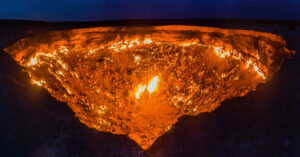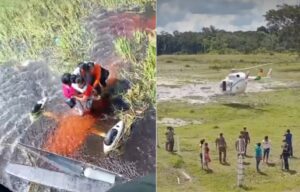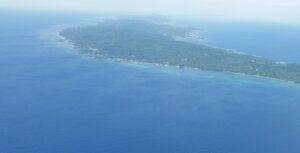“There’s a madman with a gun!” Ben Knight of Linda Downs Station thought as Jon Muir approached the isolated station. The shaggy Aussie explorer had just reached the halfway point of the hardest of his many adventures: trekking 2,500km alone across Australia while — and this is the point — finding his water and food along the way.
Anyone can walk across Australia (ha ha), but coaxing often questionable water from the desert, as the Aborigines did, and scavenging meat that has not entirely gone bad from dead cattle…well, that’s another level entirely. No wonder Muir seemed a madman to some in the few isolated stations he passed along the way.
By the time Muir began the 128-day, south-to-north journey in 2001, he was already a seasoned mountaineer, long-distance kayaker, and overall veteran of harsh climates. Since 1982, he had racked up an impressive resumé of over 20 expeditions. He had climbed Everest, skied to the South Pole, and done a series of shorter unsupported desert crossings in Australia, leading up to this one. He may have been crazy, but he wasn’t dumb.

Muir guzzling precious water, scrounged from the desert. Photo: Our Planet Travel
The recurring theme in Muir’s travels is his insistence on being unsupported. He chose to be totally cut off from the confines of civilization, not even taking a satellite or mobile phone with him in case of emergency. There was no film crew and no steady supplies of food and water. He chose to know his homeland better by walking the former paths of the Aboriginal people and learning to survive on his own by prehistoric hunting and gathering. He pulled a 150kg cart containing his sleeping bag, a gun, flour, rice, muesli, a compass, 55 maps, first aid equipment, camera gear, and water containers for when it rained. Accompanying him was his trusty Jack Russell terrier, Seraphine, who gave him love, protection, and a hunter’s nose.
This was the 40-year-old Muir’s fourth attempt at traversing the Outback. The first three times, he failed when his cart broke down or when heavy rain made it impossible to pull the cart through the mud. This time, things would be different. Muir began at Port Augusta, on Australia’s south coast, took a bearing on Burketown, an isolated outback community on the north coast, and started walking.
He and Seraphine typically set off at 5 am to beat the heat and look for water before the deadly Australian sun dried out little crevices and ponds. To keep themselves hydrated, they had to drink four litres of water a day. They kept a daily routine of 20km a day with some flexibility.
They scavenged daily to sustain themselves, hunting the Outback’s birds, rabbits, snakes, lizards, wild pigs, and yes, dead cows. Occasionally, Muir stumbled across some greens that served as vegetables, to add to their luxurious diet.
Apart from a few rivers, desalinated water from the salt lakes, and occasional filthy puddles in camel tracks, Muir gathered water — more than expected, actually — from freak thundershowers. To some observers, this may have been a godsend, but the idea of another failed crossing loomed heavily, and he was determined to make the most of this attempt, drawing on polluted water, rancid meat, luck, anything.

Crossing the Outback. Photo: kickasstrips.com
Further north, he entered dingo territory, where his own animal instincts came out. The fight for survival against dingo packs was occasionally real. Muir tried to keep them from urinating on his cart every night. But dingoes are also known for their unpredictability. Once, Muir shot the alpha male of the pack, driving the others off.
In this territory, Muir felt like an animal himself. He had truly shed his civilized skin. He abandoned his cart for the last 650km and slept between two fires when his sleeping bag fell off his ridiculously heavy backpack. On a journey like this, you have to be an optimist, but his spirit finally broke at an abandoned station just 40km from the end of the trail. Seraphine suddenly died when she ate poisoned dingo bait, leaving him all alone for the first time.
He soldiered on, ignoring hunger, the blisters on his skin, the swarms of flies, and the emotional numbness from his loss. Was it all worth it? Only Muir can say. But when he arrived at Burketown, battling mental and physical exhaustion and malnutrition, he admitted that part of his soul had been left behind in the isolation of the Outback. Finishing, he said, was an anticlimax.
His complete self-sufficiency on expeditions, his stamina, strength, and the variety of journeys — climbing, skiing, kayaking, trekking — have earned Muir a reputation as one of the most versatile adventurers of our age. He was awarded the Order of Australia and after his 2001 trek, the Australian Geographic Society’s Adventurer of the Year Award.
Barely two months after he pulled into Burketown, totally shattered, he skied from Siberia to the North Pole.






